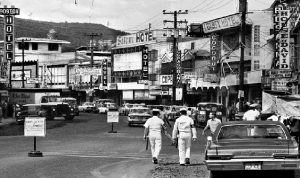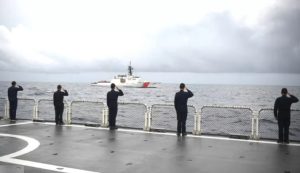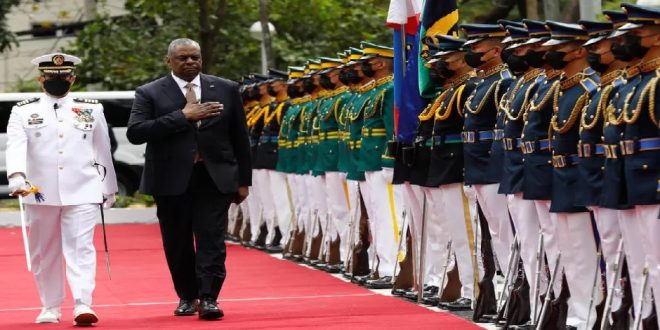03-02-2023
WASHINGTON: The US has secured access to four additional military bases in the Philippines, a key bit of real estate which would offer a front seat to monitor the Chinese in the South China Sea and around Taiwan.
 With the deal, Washington has stitched the gap in the arc of US alliances stretching from South Korea and Japan in the north to Australia in the south.
With the deal, Washington has stitched the gap in the arc of US alliances stretching from South Korea and Japan in the north to Australia in the south.
The missing link had been the Philippines, which borders two of the biggest potential flashpoints, Taiwan and the South China Sea.
The deal, which in part reverses the US’ departure from their former colony more than 30 years ago, is no small matter.
“There is no contingency in the South China Sea that does not require access to the Philippines,” says Gregory B Poling, director of the Southeast Asia program at the Centre for Strategic and International Studies in Washington.
“The US is not looking for permanent bases. It’s about places, not bases.”
The US already had limited access to five sites under the Enhanced Defence Cooperation Agreement (EDCA), the new additions and expanded access, according to a statement from Washington, will “allow more rapid support for humanitarian and climate-related disasters in the Philippines, and respond to other shared challenges”, likely a veiled reference to countering China in the region.
 The statement came after US Defence Secretary Lloyd Austin met Philippine President Ferdinand “Bongbong” Marcos Jr in Manila on Thursday.
The statement came after US Defence Secretary Lloyd Austin met Philippine President Ferdinand “Bongbong” Marcos Jr in Manila on Thursday.
The US hasn’t said where the new bases are but three of them could be on Luzon, an island on the northern edge of the Philippines, the only large piece of land close to Taiwan, if you don’t count China.
China criticized the agreement, saying “US actions escalate regional tension and undermine regional peace and stability”.
“The United States, out of its self-interests and zero-sum game mentality, continues to step up military posture in this region,” its embassy said in a statement.
These days the US is seeking access to places where “light and flexible” operations involving supplies and surveillance can be run as and when needed, rather than bases where large numbers of troops will be stationed.
In other words, this is not a return to the 1980s, when the Philippines was home to 15,000 US troops and two of the largest American military bases in Asia, at Clark Field and nearby Subic Bay.
Then in 1991 the Philippine government called time. The Filipinos had recently overthrown the hated dictatorship of Ferdinand Marcos, and sending the old colonial masters home would further cement both democracy and independence.
 The Vietnam War was long over, the Cold War was winding down, and China was as yet a military weakling. So, in 1992, the Americans went home or at least most of them did. More important, China is no longer a military weakling, and it’s knocking on the Philippines’ front door. Manila has watched horrified but powerless to intervene – as Beijing has set about redrawing the map of the South China Sea, or the West Philippine Sea as Manila insists on calling it. Since 2014 China has built 10 artificial island bases, including one at Mischief Reef, deep inside the Philippines’ own exclusive economic zone or EEZ.
The Vietnam War was long over, the Cold War was winding down, and China was as yet a military weakling. So, in 1992, the Americans went home or at least most of them did. More important, China is no longer a military weakling, and it’s knocking on the Philippines’ front door. Manila has watched horrified but powerless to intervene – as Beijing has set about redrawing the map of the South China Sea, or the West Philippine Sea as Manila insists on calling it. Since 2014 China has built 10 artificial island bases, including one at Mischief Reef, deep inside the Philippines’ own exclusive economic zone or EEZ.
Up to then relations between Manila and Beijing had been free of major problems, says Herman Kraft, a political science professor at University of the Philippines. (Int’l News Desk)
 Pressmediaofindia
Pressmediaofindia




